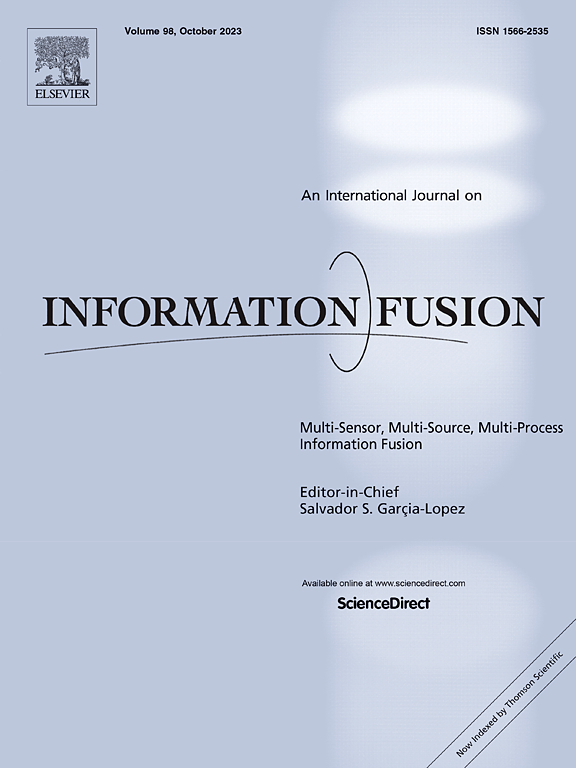IFIFusion: A independent feature information fusion model for surface defect detection
IF 14.7
1区 计算机科学
Q1 COMPUTER SCIENCE, ARTIFICIAL INTELLIGENCE
引用次数: 0
Abstract
Existing surface-defect detection networks often rely on pre-trained classification models as a backbone to extract multi-scale features and establish decoded modules tailored for these features. However, since the classification model primarily captures identifiable class features in natural images, these decoded modules struggle to accurately delineate the precise spatial structures from the multi-scale feature maps of the backbone. Also, discrete feature contents from different modules lack the necessary fusion, and the architecture lacks the ability to accurately classify the defective object in images, resulting in lower detection performance. Therefore, this paper explored an Independent Feature Information Fusion model (IFIFusion) consisting of spatial multi-axis information fusion, independent classification & spatial information fusion, and multi-scale features fusion for defect detection tasks. This model fully explores the collaborative relationship between independent modules. Firstly, this work designs a Dual-Attention transformer backbone to extract classification features and a Light-Weight multi-scale Network (LWNet) parallel to the backbone to provide independent features for the proposed Spatial multi-Axis Fusion module (SAF). This study provides an independent feature fusion module (IFF), primarily consisting of the connector, convolution layers, batch normalization, ReLU, and interpolation method, to enrich discrete feature contents. Then, the SAF aggregates and fuses the discriminative spatial features from non-classification feature maps. Lastly, the paper fuses the feature maps at each scale to achieve effective coupling and interaction, enhancing the presentation of defective features. Extensive experiments demonstrate that the proposed method outperforms state-of-the-art algorithms regarding visual quality and quantitative evaluations. The code is available at https://github.com/zhx-hub/IFIFusion/tree/main.
求助全文
约1分钟内获得全文
求助全文
来源期刊

Information Fusion
工程技术-计算机:理论方法
CiteScore
33.20
自引率
4.30%
发文量
161
审稿时长
7.9 months
期刊介绍:
Information Fusion serves as a central platform for showcasing advancements in multi-sensor, multi-source, multi-process information fusion, fostering collaboration among diverse disciplines driving its progress. It is the leading outlet for sharing research and development in this field, focusing on architectures, algorithms, and applications. Papers dealing with fundamental theoretical analyses as well as those demonstrating their application to real-world problems will be welcome.
 求助内容:
求助内容: 应助结果提醒方式:
应助结果提醒方式:


